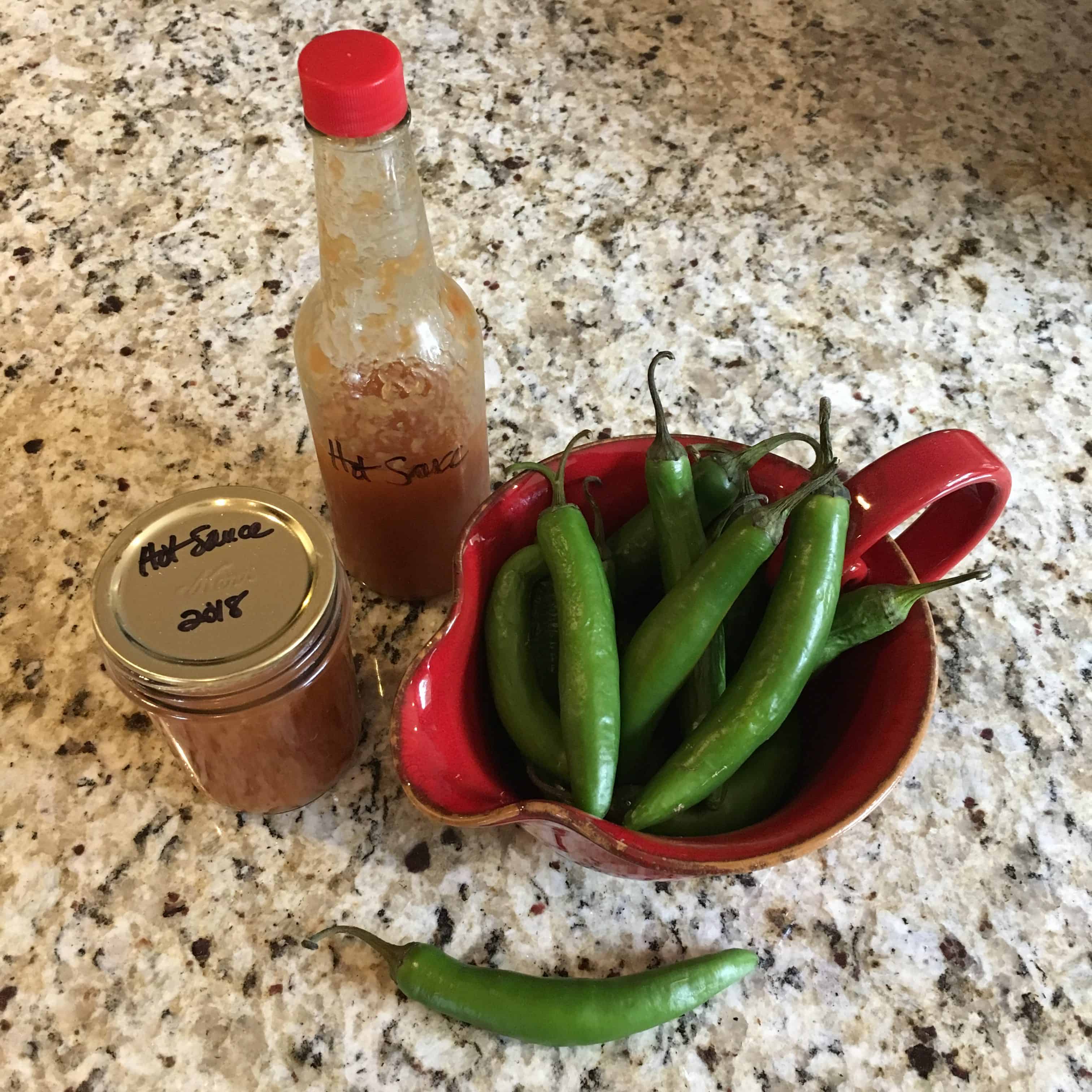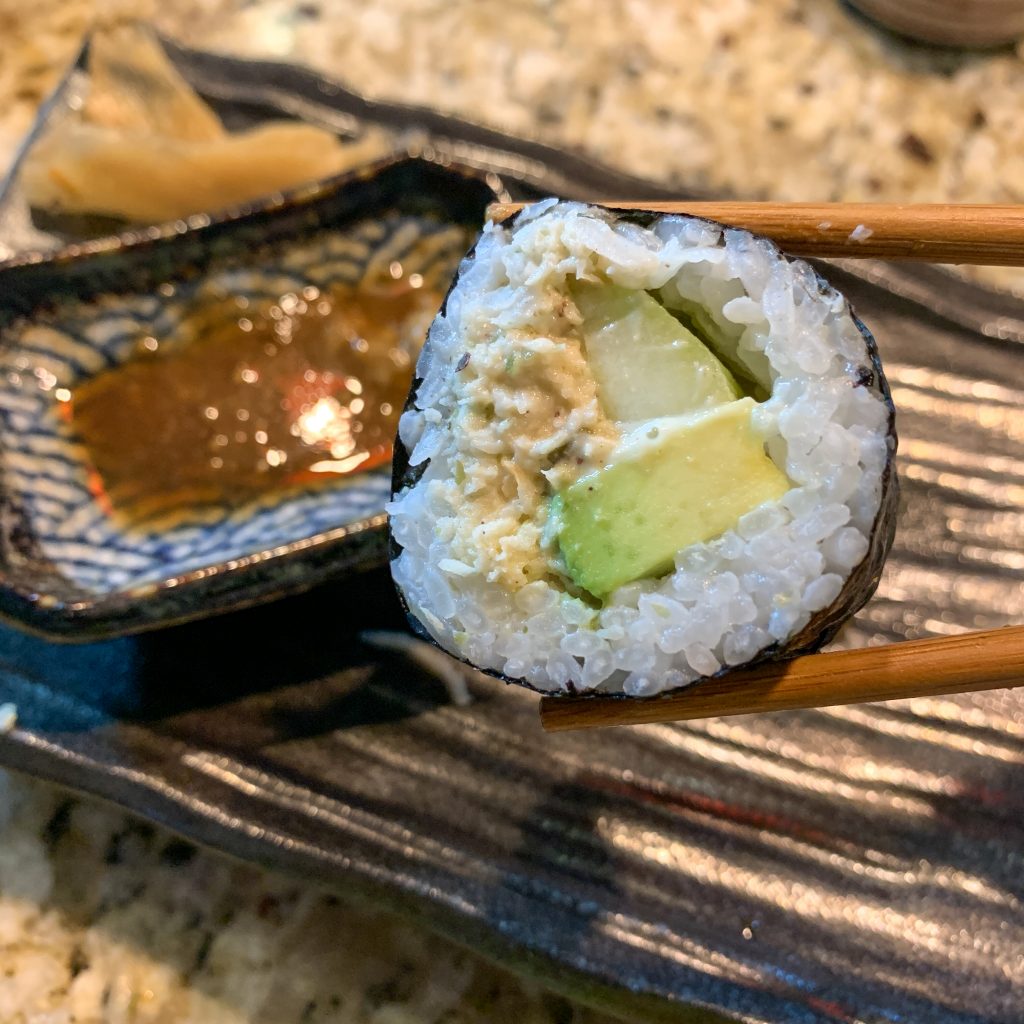Canning Hot Sauce
#VeganMoFo18 Day 8 – Canning Hot Sauce
Please note, this post is meant as an overview of canning hot sauce and does not replace or represent itself to be an official guide for proper canning at home. It is important to consult safe canning resources, which are listed at the end of this post.
Alright, there have been a bunch of people in my Vegan & Whole Food Plant-Based Canning & Preservation Facebook Group patiently waiting for this post. I made my hot sauce nearly a month ago and I’ve had lots requests to share, but I wanted to include it in VeganMoFo.
I don’t know if you know this, but hot sauce is kinda a firefighter food rule, a staple in US firehouses, along with ketchup and ranch dressing. You want to have a riot in a firehouse, run out of hot sauce! So, a fire service career has made hot sauce a house staple for me, ranch, not so much!

Ingredients and Supplies for Hot Sauce
I found a fantastic publication from the North Dakota State University Extension Service called Make Your Own Home-canned Condiments. I’d been looking for information on canning mustard and discovered this during my search. Not only does it have a great recipe for Dijon mustard, it has a nine other recipes for condiments you can make at home (all but one of them can be canned), perfect for a zero waster, and they’re all plant-based/vegan. I’ve made several recipes from this resource and will post about them separately.
There are two hot sauce recipes included in the ten condiments: Hot Sauce and Tomato Taco Sauce. I made the Hot Sauce, haven’t tried the taco sauce yet. The hot sauce calls for undrained canned tomatoes, Serrano peppers, white vinegar, salt, and pickling spice. I used tomatoes I canned last year. The directions say to remove the seeds, and since I’d not made it before, I removed quite a bit of the membrane. I love hot, hot sauce, but other people in my family do not, so I was trying to be mindful of other people who might use it.
To make the hot sauce, you put the pickling spices in a spice bag (I tied up in cheese cloth), combine it with all ingredients into a stock pot, and bring to a boil. When everything is soft, about 20 minutes, you remove the bag of pickling spice, run the mixture through a food mill or food press and discard the solids. The sauce is returned to a boil and put into half-pint jars and boiling water bathed 15 minutes (or more, depending upon your elevation). You can pre-sterilize your jars in a dishwater for this recipe since you will be processing the jars more than 10 minutes.

Home mix of Pickling Spice
I tell you what, the house smells divine while this sauce is cooking up! That peppery, vinegary aroma wafts throughout the whole house and makes you crazy for a taco or burrito or anything to eat with hot sauce. It has great flavor, but the first batch just wasn’t hot enough for me without the seeds and membranes. I had some Serranos left and made a second batch with just cutting up the Serranos whole and chucking them in with the rest of the ingredients. This batch is much spicier, much more to my liking. So if you like your hot sauce hot, I recommend leaving the seeds and membranes intact and just cutting the peppers into chunks to make this sauce.

Chunked up Serranos
I filled an empty bottle from some Tapatio Salsa Picante Hot Sauce I’d used up. It’s way easier to use hot sauce from a bottle than a canning jar, and I needed to repurpose the bottle anyway. I keep the bottle in the refrigerator and the canning jars of hot sauce in my pantry until I run low and need a refill. I love having a zero waste option for hot sauce! And it really couldn’t be easier since you start with canned tomatoes.
Note: I put the solids leftover from putting the cooked ingredients through the food press in my compost bin, rather than in the worm bin. Spicy foods are one of the things not to feed worms, probably because their skin is kind of one big mucous membrane. But more on worms another time.

Solids left from Pressing
Resources
There are some great resources available for home canning. Internet resources are fantastic as they are generally most up to date. There are some standby books, but remember to get new ones every few years to be current with updated guidelines.
Ball® Blue Book® Guide to Preserving
National Center for Home Food Preservation
North Dakota State University Extension Canning Publications
Washington State University Extension Food Preservation
Iowa State University Preserve the Taste of Summer Online Canning Class
Ball® and Kerr® Fresh Preserving Website
My Vegan and Whole Food Plant-Based Canning Facebook Group
Tomorrow I’ll go over making and canning Dijon mustard. It was really a fun project! Canning condiments really cuts down on the amount of glass jars we accumulate and have to find ways of repurposing.
Do you like this post? Please share....
[mashshare]
If you liked this post, you might like one of these:
Tags:

[Trī-māz-ing]
Cindy wants you to be Trimazing—three times better than amazing! After improving her health and fitness through plant-based nutrition, losing 60 pounds and becoming an adult-onset athlete, she retired from her 20-year firefighting career to help people just like you. She works with people and organizations so they can reach their health and wellness goals.
Cindy Thompson is a national board-certified Health and Wellness Coach, Lifestyle Medicine Coach, Master Vegan Lifestyle Coach and Educator, Fitness Nutrition Specialist, Behavior Change Specialist, and Fit2Thrive Firefighter Peer Fitness Trainer. She is a Food for Life Instructor with the Physicians Committee for Responsible Medicine, Rouxbe Plant-Based Professional, and Harvard Medical School Culinary Coach, teaching people how to prepare delicious, satisfying, and health-promoting meals.
She provides health and lifestyle coaching at Trimazing! Health & Lifestyle Coaching. Cindy can be reached at info@trimazing.com.
Subscribe to the Trimazing Blog
Receive occasional blog posts in your email inbox.
Subscribe to the Trimazing Blog
Receive occasional blog posts in your email inbox.





















